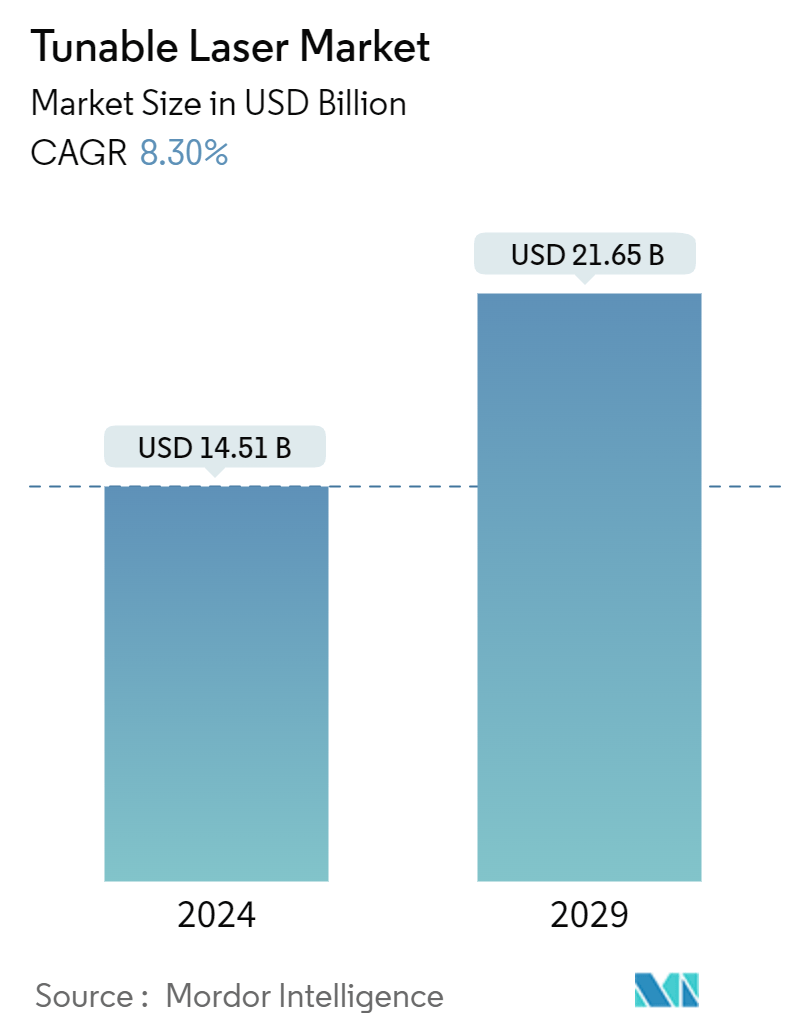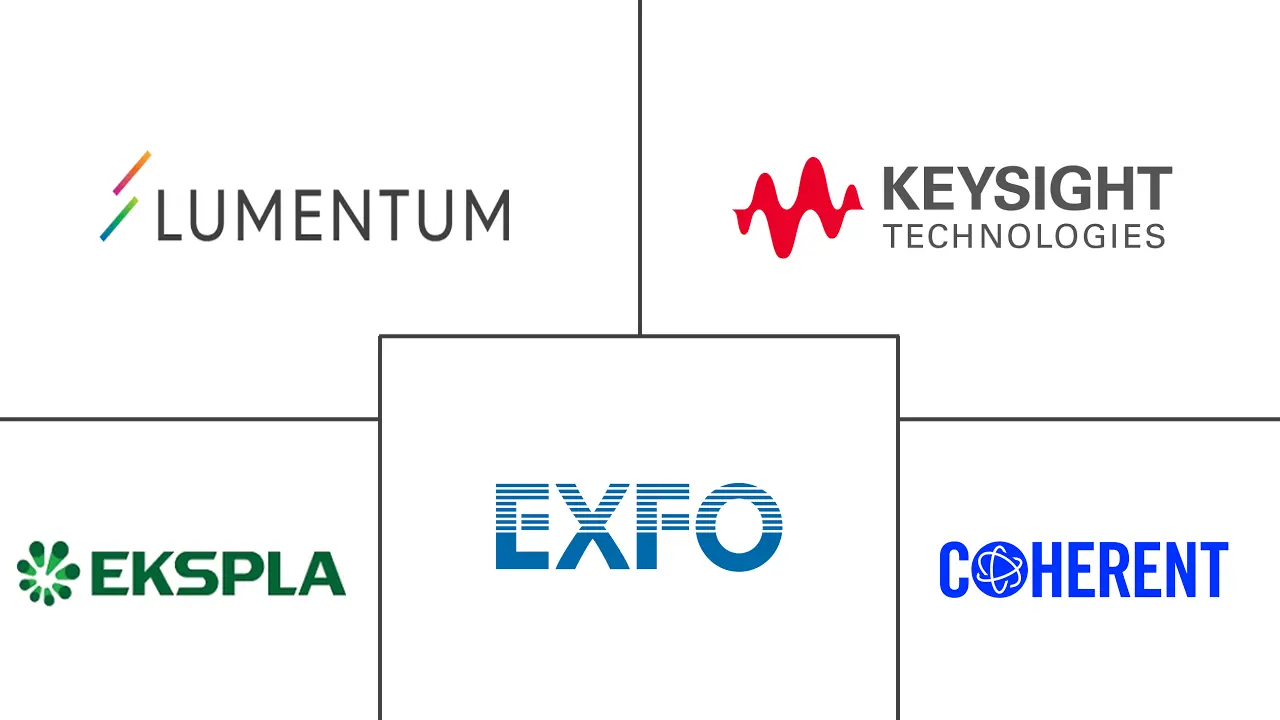Market Size of Tunable Laser Industry

| Study Period | 2024-2029 |
| Market Size (2024) | USD 14.51 Billion |
| Market Size (2029) | USD 21.65 Billion |
| CAGR (2024 - 2029) | 8.30 % |
| Fastest Growing Market | Asia Pacific |
| Largest Market | Asia Pacific |
Major Players
*Disclaimer: Major Players sorted in no particular order |
Need a report that reflects how COVID-19 has impacted this market and its growth?
Tunable Laser Market Analysis
The Tunable Laser Market size is estimated at USD 14.51 billion in 2024, and is expected to reach USD 21.65 billion by 2029, growing at a CAGR of 8.30% during the forecast period (2024-2029).
Tunable lasers possess the ability to emit light at different wavelengths, making them very versatile. This flexibility enables them to adapt to various applications like spectroscopy, material processing, optical communications, etc. These lasers can be fine-tuned to match the specific requirements, providing robust control and precision. The lasers can emit a broad spectrum, from ultraviolet to infrared, allowing for a multitude of applications.
- Tunable lasers offer high resolution, allowing researchers to precisely study minute details. This level of resolution is crucial in fields like microscopy, where the ability to focus on specific structures or cells is paramount. By adjusting the laser's wavelength, efficient detail and clarity can be achieved.
- Tunable lasers offer cost-effective solutions in various industries. Compared to traditional fixed-wavelength lasers, tunable lasers eliminate the need for multiple lasers to cover a wide range of wavelengths. This consolidation reduces costs associated with maintenance, calibration, and power consumption.
- Additionally, the ability to reconfigure the laser's output wavelength eliminates the need for expensive hardware upgrades, making these lasers a more economical choice in the long run. They also offer high energy efficiency by converting the input energy into useful output light. This efficiency reduces power consumption, making tunable lasers an environmentally friendly choice.
- Tunable lasers are also being integrated with other technologies, such as optical fibers and integrated photonics. Combining these technologies allows tunable lasers to enable more complex and integrated systems. Further, the integration of tunable lasers with artificial intelligence (AI) holds great potential for optimizing laser performance. AI can be employed to automate the tuning process, enhance stability, and optimize laser parameters based on specific applications. This integration could enable more efficient and intelligent control of tunable lasers.
- However, the high initial cost associated with tunable lasers is one of the primary market restraints. The extensive R&D required to manufacture these lasers results in expensive production processes, making them unaffordable for many potential buyers. The high cost restricts the market to a niche customer base and limits the adoption of tunable lasers in various industries.
- The outbreak of COVID-19 increased the usage of data. According to a report on the impact of the COVID-19 pandemic on China's entertainment industry by Maoyan Entertainment, a leading platform providing innovative Internet-empowered entertainment services in China, the movie industry was severely hit by the pandemic. In contrast, the online entertainment market, including TV and streaming platforms, was booming as people were confined to their homes. This has led to the growth in the market.
